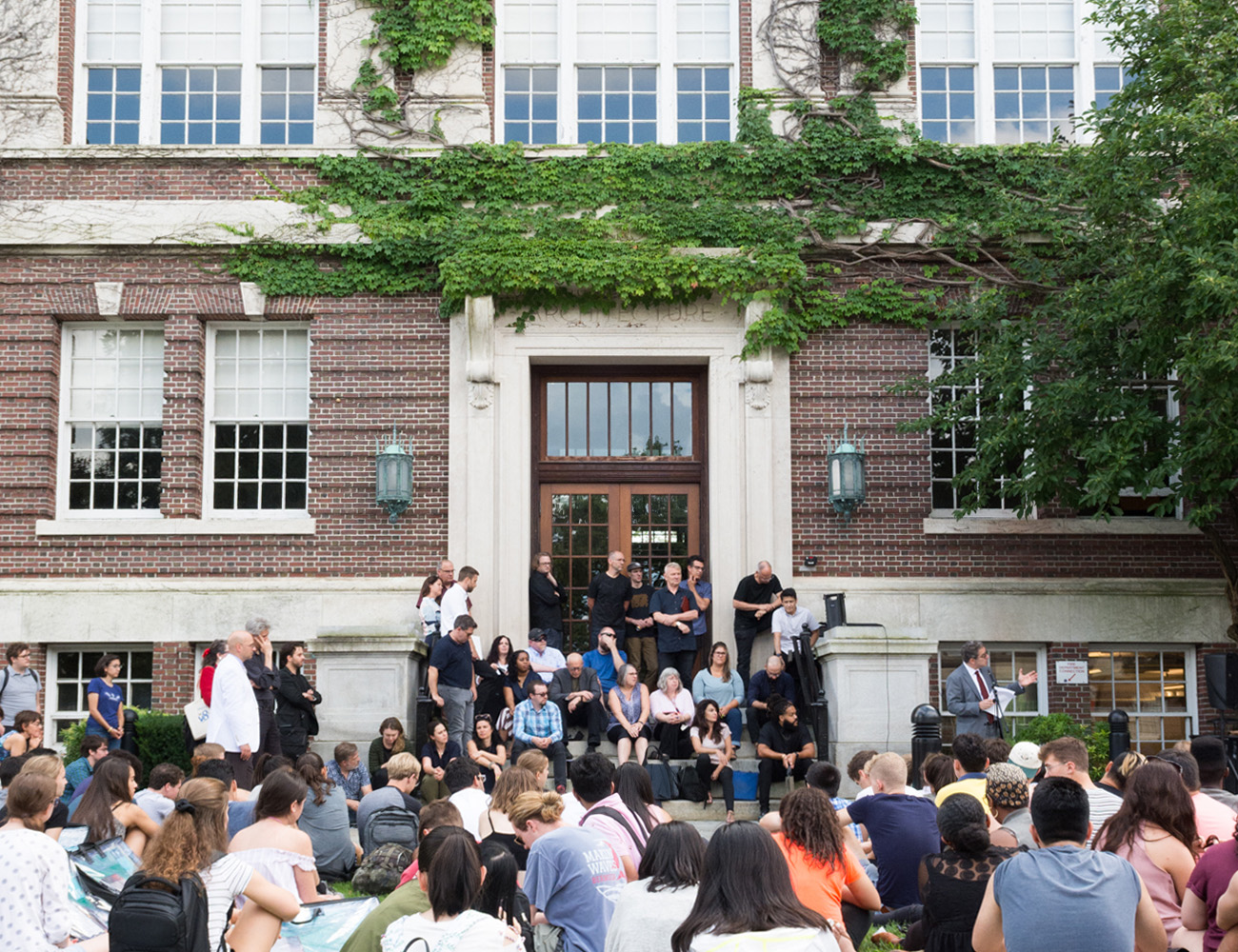History and Objectives

MISSION
The mission of the Rensselaer School of Architecture is to foster a new generation of pioneering, technologically advanced, and socially conscious architects ready to champion the sustainable stewardship of our natural and built environment, while empowering diverse communities worldwide.
RENSSELAER POLYTECHNIC INSTITUTE
Rensselaer Polytechnic Institute, the nation’s oldest technological research university, was established as The Rensselaer School in 1824 by Stephen Van Rensselaer, with the mission of educating the sons and daughters of farmers and instructing individuals in the application of science to the common purposes of life. It is hailed as “…the first school of science and school of civil engineering, which has had a continuous existence, to be established in any English-speaking country,” according to Palmer C. Ricketts in his preface to the second edition of his History of Rensselaer Polytechnic Institute (1914).
In 1833, the school became the Rensselaer Institute, and in the 1850s, its purpose was broadened to become a polytechnic institution. In 1861, the Institute’s name was changed to Rensselaer Polytechnic Institute. Over time, Rensselaer has evolved into a fully realized university of undergraduate and graduate students drawn to science and technology, and to disciplines ranging from architecture and engineering to business and the arts. Benefiting from a legacy of bold exploration, the university is comprised of a diverse community of students and faculty committed to moving theory into practice, with the larger aim of contributing to the world on a transformative level, igniting change that reverberates across generations.
A nonsectarian, coeducational institution, the university offers degrees from five schools: Engineering; Science; Architecture; Humanities, Arts and Social Sciences; and the Lally School of Management; as well as an interdisciplinary degree in Information Technology and Web Science.
Under the visionary leadership of Martin A. Schmidt, the 19th President of Rensselaer Polytechnic Institute (RPI), the Rensselaer Forward Plan was launched in 2023. This transformative initiative offers a comprehensive strategy aimed at advancing innovative education, research, translation, and regional engagement efforts while fostering a safe, welcoming, and inclusive campus environment, empowering students, faculty, and staff to thrive in a rapidly changing world.
SCHOOL OF ARCHITECTURE
The history of the School of Architecture at Rensselaer dates back to 1848 when Benjamin Franklin Greene, the senior professor, and director at Rensselaer at that time, traveled to Europe to undertake the first systematic study of educational models, examining, among others, the École Des Beaux-Arts and École Politechnique in Paris. Upon his return, he wrote, The True Idea of a Polytechnic, premised on looking forward to the creation of a new world. He proposed the “Rensselaer School” become “The Rensselaer Polytechnic of Engineering and Architecture,” asserting Architecture to be essential to any polytechnic “worthy of the name.” While fulfillment of this vision would have made our School of Architecture the first in North America, Greene’s recommendation finally became reality in 1929. The first architecture students graduated in 1933.
The Department of Architecture later renamed the School of Architecture, remained small in its early years, emphasizing a more pragmatic approach for the study of architecture. Professor Turpin Bannister, a founder of the Society of Architectural Historians, introduced the study of history into the program in the 1930s. After World War II, the program grew and developed depth in the areas of structures and building construction. A design emphasis emerged in the 1960s, with greater concern for urban design and social issues.
In the subsequent years,, the school’s two NAAB-accredited programs (B. Arch. and M. Arch.) have earned global acclaim for their integrated approach, seamlessly merging art, science, and technology while actively tackling environmental and social concerns across the curriculum. This robust framework guarantees a comprehensive education for aspiring architects.
More recently, the school has aligned with the Institute’s commitment to science, engineering, and technology. Accordingly, three graduate research programs were established to broaden the intellectual diversity of the school and promote exchange across disciplines: the Lighting program, established in 1988, which focuses on innovative lighting solutions and technologies to improve the quality and efficiency of illuminated environments; the Architectural Acoustics program, established in 1998, which explores the art and science of sound within architectural spaces, seeking to enhance acoustic performance in buildings through advanced research and design techniques; and the Built Ecologies program, established in 2007, which integrates ecological principles into architectural practice, promoting sustainable design and the development of environmentally responsible built environments.